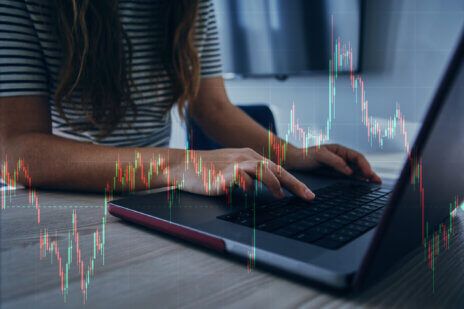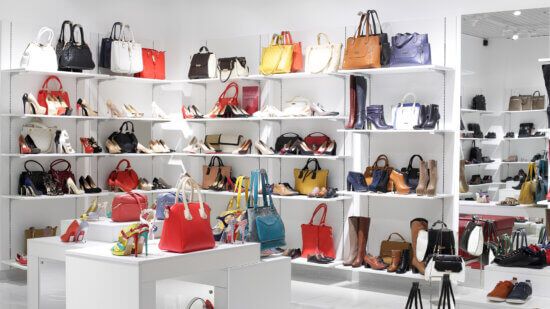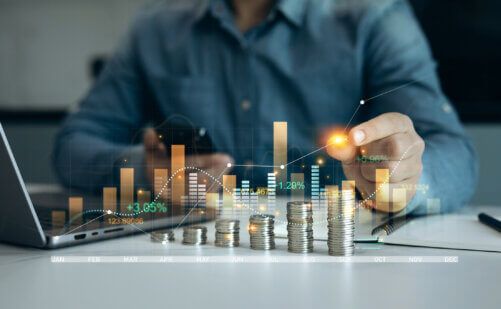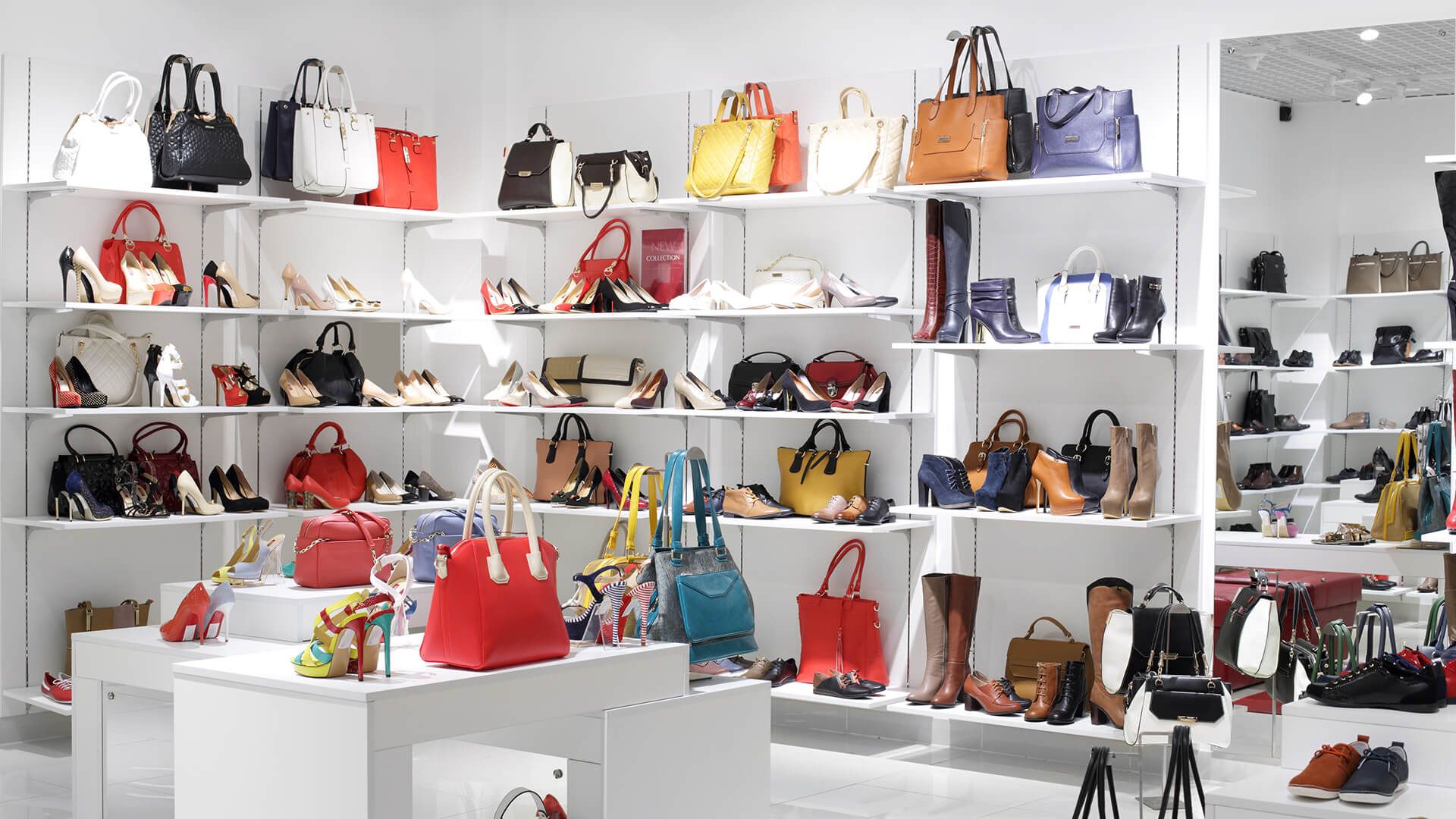
Thornburg Investment Management’s Chief Investment Strategist, Brian McMahon, recently sat down with Jonathan Schuman, Head of International, to discuss Brian’s views on opportunities across global markets, how companies are reacting to a changing geopolitical and economic environment, his observations from recent trips to Europe, and his views on working and living in Santa Fe.
Jonathan Schuman
Brian, let’s start with a common topic in the investor community this year, which is the idea of selling the U.S. and buying international, meaning global ex-US equities. This concept has been partly reflected in fund outflows from U.S. equities and fund inflows into European equities or global ex-US equities. Could you share your thoughts on why an ‘America versus Europe’ or a ‘U.S. versus international’ framework can be too simple a way to look at things?
Brian McMahon
I think it is too simple a way to look at things because most mid-cap and large-cap public companies are, to one extent or another, global businesses. If you look at the largest U.S. companies, they’re global businesses. Let’s think about Coca-Cola, which is a U.S. company with headquarters in Atlanta. They get 70% of their revenue from outside the U.S., and only 30% inside the U.S., and I can look at a European headquartered drug company that might get 40% of its revenues from the U.S. I wouldn’t get too hung up on where the company has its headquarters. I’m more focused on whether they have paid customers, how much the customers are paying, what the margins are, and what’s being shared with us as shareholders.
Jonathan Schuman
Tariffs have been a significant topic in the news and on the minds of many businesses. Trade policies have become harder to predict for companies over the course of this year. Based on your observations, how are businesses that are more involved in global trade reacting to the oscillations in U.S. trade policy? What should investors be focused on when they’re reading or hearing about global trade?
Brian McMahon
Well, I think one good source of information for us is the global logistics company DHL. We met with the company twice in person so far this year. They’ve surveyed their customers because they’re moving freight by land, sea, and air, all over the world, and they’ve told us that most of their customers are in a bit of a wait-and-see mode. Maybe packages coming out of China tend not to be coming to the U.S. as much, although pauses in tariffs caused a big rush in June this year, after a slowdown in April and May. The global trade lanes that have opened up in the last two generations remain open. The U.S. trading lane is faced with a lot of uncertainty at the moment, and we’ll find out how things are rebalanced. There will be fewer shipments coming into the U.S., but we still have a big market. It’s just that either the exporter into the U.S. is going to receive less, or the U.S. consumer is going to pay more, and I think there’ll be some balance between those two outcomes.
Jonathan Schuman
This description of your conversations with DHL illustrates one meaningful part of our investment process – namely, deep research on companies. You’ve spent a considerable amount of time this year meeting with companies, including several trips to Europe. What did you observe regarding how European businesses have been responding to changes in their business environment, whether it’s trade policy, movement in currencies, or capital market flows?
Brian McMahon
They are thinking about what the impact of tariffs will actually be as far as their business with the U.S. When we meet with European companies, they also tell us that U.S. institutional investors want to come in and meet with them much more than they have in the prior five to eight years. So that’s a big difference, and there have been some investor flows, increasingly into non-U.S. stocks from U.S. investors. But there has also been some repatriation of funds by European investors who were very heavy in the Mag 7 and then the U.S. large caps.
Jonathan Schuman
Throughout your career, you’ve invested in environments other than the accommodative, ultra-low-interest-rate environments that investors have come to know since the global financial crisis. What should investors keep in mind about the economic and market environments that preceded the financial crisis?
Brian McMahon
In talking to people in the investment business that I meet around the world, I sense that there’s not a great appreciation for the fact that between 1982 and 2008 – so for 26 years – the average Federal funds rate was about 5.55% and the average inflation was 2.85%. These levels are not very different from what we experience today. The real Fed funds rate above inflation was 2.7% for 26 years, and in that environment, an investor could do pretty well just leaving money in cash or a money market fund. Now, if we flash forward to the period from 2009 to the present, the average real Fed funds rate was negative 90 basis points. A negative real Fed funds rate is normal to many people. In the current environment, where real rates are around 1.5% in the U.S. – and lower in many other developed markets – leaving money in cash or a money market fund, particularly if rates start to decline, may be sufficient for investors to meet their financial goals.
I also try to remind our clients to try to look at longer-term trends. Today, there is a lot of talk about a weakening dollar. Let’s think about the dollar and the Euro from a longer-term perspective. If you go back to 1999, the initial value of the euro was pegged at $1.19 per euro so and within a couple of years, it went down to 88 cents per euro. And in the latter part of the first decade of this century, it was around $1.65 a euro. Today, we’re at $1.17 or $1.18. So, we’ve been up, we’ve been down, but we’re pretty close to where we started, 25 to 26 years ago, just for some perspective. I think it’s important to keep in mind that, at the moment, we’re approaching normal when it comes to the Euro and the Dollar.
Jonathan Schuman
As a fundamental, bottom-up investor, what characteristics of businesses do you see that enable them to flourish in this environment for the coming years?
Brian McMahon
In my view, the core fundamentals remain largely consistent, even as markets evolve. That said, sustaining a leadership position is always a challenge. Take Taiwan Semiconductors, which is one of our core holdings. TSMC doesn’t sell anything to retail customers or consumers, but it does a lot of business with companies like Nvidia and Tesla, and other tech companies. There aren’t many companies that can announce a $100 million investment into U.S. production facilities over five years. That’s huge. So those are the kind of characteristics that we look for today. Do they have paying customers? Do they have a margin, and do they have some competitive position that appears solid? And maybe I’ll throw on top of that, what’s the cost? What’s the value of the shares? What do I have to pay for that? I don’t like to overpay.
Jonathan Schuman
One of the things that the investor community tends to pay up for is themes. Popular themes of late have included artificial intelligence, decarbonization, and even reshoring. Do you have a perspective on how themes affect valuation discipline, valuation opportunities, and how we think about companies that are well-positioned irrespective of the political and macro environment?
Brian McMahon
There has always been themes, and there will always be themes. Maybe one observation about themes is directionally, they’re often pretty good, but it’s the timing that catches people off guard. People started talking about AI about three years ago, and it started getting worked into everybody’s earnings calls. They’re talking about it in the media a lot, and anything with AI goes up a lot. But it usually takes years for the financial results to catch up with whatever that theme is. And in the meantime, a lot of investors will lose interest because they don’t see results near term. That’s when you get a chance to come in and buy. We know the hardware and data center companies benefit the most from the AI interest right now. But which companies will be able to be much more efficient in delivering their product or service has yet to be determined.
Jonathan Schuman
That is a helpful, longer-term perspective on technological opportunities for businesses.
Brian McMahon
We’re doing this session on Zoom, which wasn’t available a few years ago. I can remember when I was traveling and I had to go to find a phone booth to make a call back to the office. And it wasn’t all that long ago when my kids were amazed when I told them about it, because they couldn’t imagine that I didn’t have a portable device to make a phone call or make a video call. So, yeah, technologies are great. Ever changing, and then it changes a lot of things underneath about how business is done.
Jonathan Schuman
I’m going to conclude with a question about Santa Fe, which is our home at Thornburg, and I’d like to ask what Santa Fe has meant for your life and career.
Brian McMahon
I grew up in central Ohio and was shaped by that experience—still am, in many ways. Living now at the foot of the Sangre de Cristo Mountains has been incredibly grounding. I value the four-season climate and make a point to get outside and walk three miles or more every day. It’s a simple lifestyle: my commute is short, there’s no traffic—just one stoplight. Some might underestimate the quality of life, but it’s been important for me. It creates the kind of environment that supports long-term focus and clarity of thought. Santa Fe is far from the crowd—there aren’t many investment professionals here, which means fewer distractions. That quiet space allows me to stay focused on what really matters: company fundamentals and our clients’ portfolios.
Discover more about:
More Insights

Thornburg Investment Income Builder Fund – 4th Quarter Update 2025

Extract Maximum Income Using Active Management

Investment Perspectives from the Road: European Luxury Goods

Thornburg Income Builder Opportunities Trust Announces Distribution

Turn Cash Into Opportunities With Active Management



